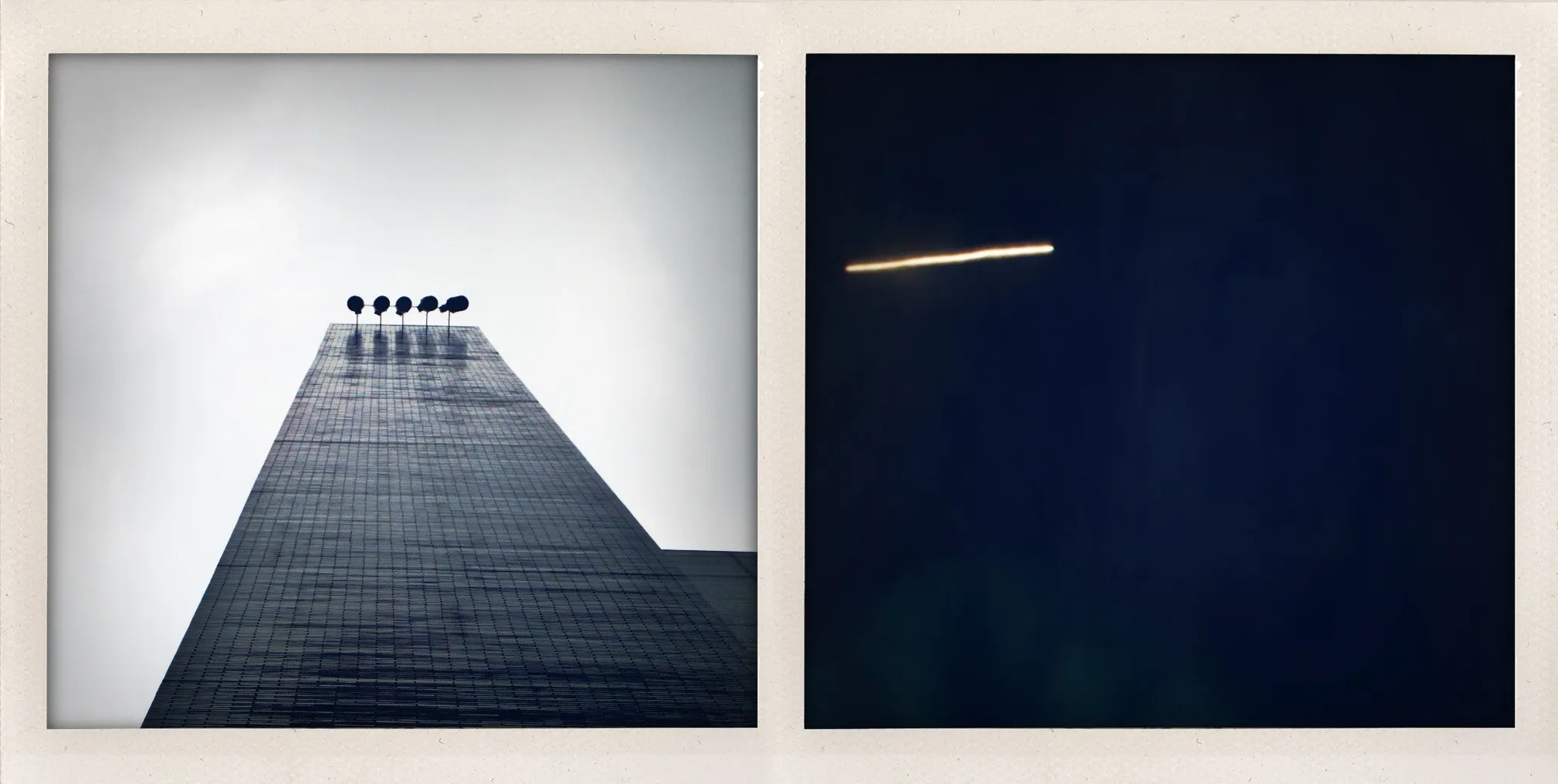The Flex

This diptych uses architectural and abstract forms to suggest a bodybuilder mid-pose. The left panel’s towering vertical structure and five rooftop lights read as a flexed forearm ending in splayed fingers. The right panel’s diagonal light streak evokes a strained eye, watchful and determined during peak exertion.
The title “The Flex” frames the performance - that moment when a bodybuilder pauses mid-competition to display maximum definition, turning muscle into spectacle. The architectural parallel suggests how skyscrapers similarly perform monumentalism: designed to dominate skylines, photographed from below to emphasize towering presence, existing primarily to be seen and admired. Both building and bodybuilder transform structural mass into performance under scrutiny, whether from competition judges or urban onlookers.
Essay written: November 2025